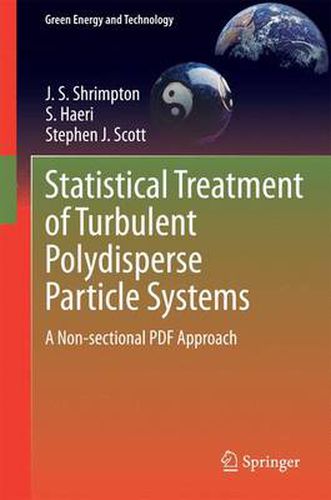Readings Newsletter
Become a Readings Member to make your shopping experience even easier.
Sign in or sign up for free!
You’re not far away from qualifying for FREE standard shipping within Australia
You’ve qualified for FREE standard shipping within Australia
The cart is loading…






This title is printed to order. This book may have been self-published. If so, we cannot guarantee the quality of the content. In the main most books will have gone through the editing process however some may not. We therefore suggest that you be aware of this before ordering this book. If in doubt check either the author or publisher’s details as we are unable to accept any returns unless they are faulty. Please contact us if you have any questions.
In this book we will introduce the modeling process of turbulent particulate flows which are encountered in many engineering and environmental applications. These types of flows usually also involve heat and mass transfer and turbulence adds another dimension to the complexity of the problem and hence a rigorous mathematical treatment is usually required. This required mathematical background makes the learning curve for new research students and practicing engineers extremely steep. Therefore modeling process for new or existing problems is extremely slow and is usually restricted to minor improvements to the to the available models.
In this book we try to gather the required mathematical knowledge and introduce them more intuitively. Many numerical simulations of basic processes and equation will be given to provide the reader with a physical understanding of the different terms in the underlying equations. We will start the modeling process from a mesoscopic level which deals with the system of an intermediate length scale between the size of the atoms or molecules and the bulk of the material. This provides a unique opportunity for the reader to intuitively add different phenomena to their models and equipped with the necessary mathematical tools derive the final models for their problems.
$9.00 standard shipping within Australia
FREE standard shipping within Australia for orders over $100.00
Express & International shipping calculated at checkout
This title is printed to order. This book may have been self-published. If so, we cannot guarantee the quality of the content. In the main most books will have gone through the editing process however some may not. We therefore suggest that you be aware of this before ordering this book. If in doubt check either the author or publisher’s details as we are unable to accept any returns unless they are faulty. Please contact us if you have any questions.
In this book we will introduce the modeling process of turbulent particulate flows which are encountered in many engineering and environmental applications. These types of flows usually also involve heat and mass transfer and turbulence adds another dimension to the complexity of the problem and hence a rigorous mathematical treatment is usually required. This required mathematical background makes the learning curve for new research students and practicing engineers extremely steep. Therefore modeling process for new or existing problems is extremely slow and is usually restricted to minor improvements to the to the available models.
In this book we try to gather the required mathematical knowledge and introduce them more intuitively. Many numerical simulations of basic processes and equation will be given to provide the reader with a physical understanding of the different terms in the underlying equations. We will start the modeling process from a mesoscopic level which deals with the system of an intermediate length scale between the size of the atoms or molecules and the bulk of the material. This provides a unique opportunity for the reader to intuitively add different phenomena to their models and equipped with the necessary mathematical tools derive the final models for their problems.